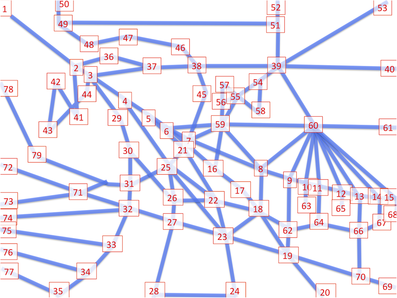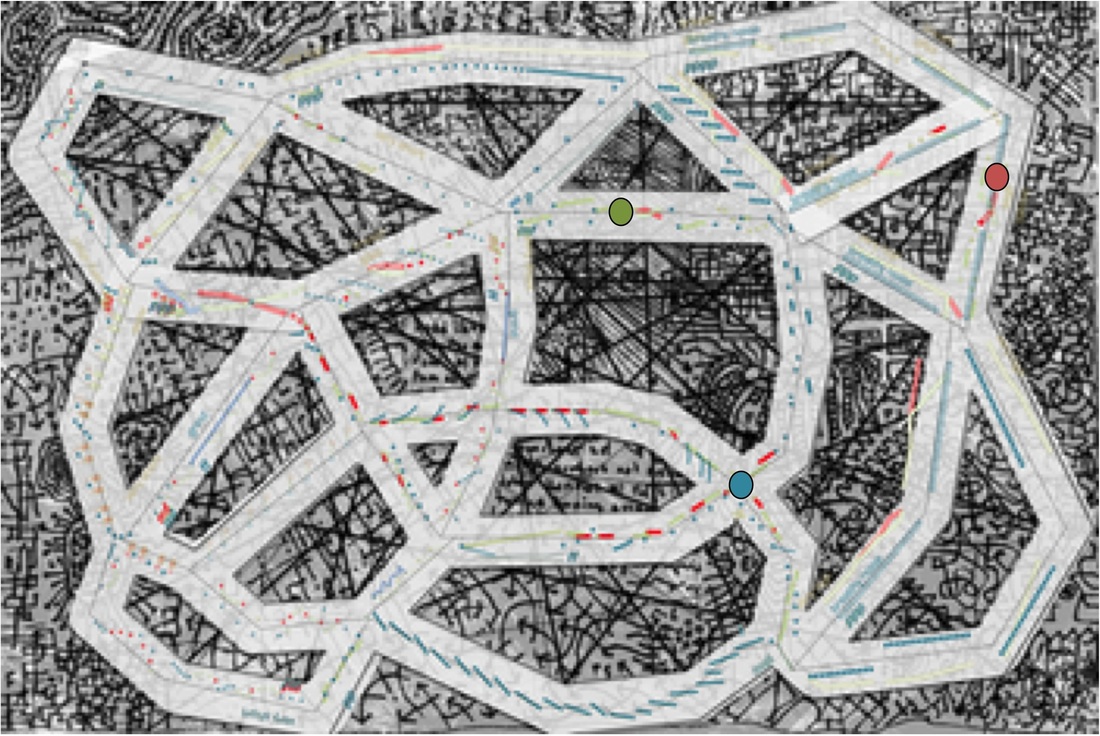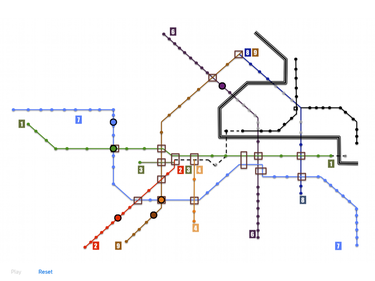Boulez, for example, describes the Third Piano Sonata as a Labyrinth, in which,
The itinerary is left to the interpreter’s initiative, he must direct himself through a tight network of routes. This form, which is both fixed and mobile, is situated, because of this ambiguity, in the centre of the work for which it serves as a pivot, as a centre of gravity [P. Boulez. Sonate, que me veux-tu?. Perspectives of New Music, 1, 2, 1963, 32–44: 41].
- since the audience always experiences the works in a linear fashion, sequentially in time, their indeterminacy is unverifiable: the audience cannot compare the pathways chosen to those that were not. In this sense, the rhizomatic qualities are evident to the performer(s) alone;
- performances are arguably undermined by the fact that any particular instantiation may have been potentially been less satisfying than another;
- there can be no overarching cartographical representation of its the structural potentials for the audience inhibiting communication of the structural/performative principles in play;
- the length and complexity of alternate “pathways” are limited to passages accommodated by the printed score (Klavierstück XI uses a very large sheet of paper (53 x 94 cm), and a balsa wood frame to stand it upright);
- the quality of “immanent choice” that is one of the affordances of a rhizomatic structure, can only be executed by a single performer unless conductor(s) are used, (Event Synergy II), otherwise the route through the structure must be pre-determined (Concert for Piano, Third Piano Sonata, Prima Vista);
- indicating and limiting the number of potential connections between pathways is extremely difficult;
- Western music notation is almost exclusively read horizontally from left to right, meaning that pathways remain on a single plane and cannot easily be joined together 2-dimensionally;
- although pathways may consist of varied musical materials and therefore result in diverse musical outcomes, the sounds themselves remain situated in the instruments that make them, excluding the possibility of communication of the rhizomatic structure through the form-bearing [S. McAdams. Psychological Constraints on Form-Bearing Dimensions in Music. Contemporary Music Review, 4, 1, 1989, 181-198.] parameter of spatialisation.
| Early in 2015 OSC communication was implemented for the Decibel Scoreplayer [C. Hope, A. Wyatt, & L. Vickery. The Decibel Scoreplayer: Enriched Scores for the iPad. Proc. of the 2015 ICM Conference, Denton TX, 2015] allowing for works combining the scoreplayer with synchronized audio processing and spatialisation on a networked computer. This re-opened the possibility for exploring rhizomatic scores with synchronized audio processing and for controlling the movements of the instruments in structurally significant ways | To address these issues a computer-coordinated solution to the problems of rhizomatic presentation of musical compositions with live performers was developed allowing for the creation of precise, unique but variable, multiple versions of rhizomatic works, in which the both the audience and the performers share in the exploratory immanent choice available in this approach, and spatialisation and digital processing are aligned directly to the emerging formal structure. |
| Ubahn is the most programmatic of the works and its structure mirrors this in a game-like manner. The individual parts are free to move around the map unless they reach the 'Alexanderplatz' node at which point they are switched to the East German Ubahn system (the black lines in the top right hand corner of Fig. to the left). Upon transfer to the “Eastern Block” their screen is replaced with a “Graffiti Score” (comprising elements of the East German national anthem overlaid with drawings and images by Jon Rose). The performers play the graffiti score as a piece of indeterminate graphic notation. When all players have reached East |
In this way the consequence of the rhizomatic score structure can be emphasized through the exposition of diverse outcomes originating from the same starting point. The use of a Refrain acts against what Deleuze and Guattari would call the ‘deterritorializing’ effect of indeterminate movement through the rhizomatic score structure.
Each performer in detritus has separate parts. The parts are horizontally (temporally) coordinated in the fashion typical of traditional music. This means that when the performers move together their parts are audibly more synchronized than when they are independent of one another. The semantic graphical score was assembled using rhythms and pitch contours from fragments (detritus) of a traditionally notated ensemble piece, cities sunk in endless slumber [2012] for violin, clarinet and piano.







 RSS Feed
RSS Feed
